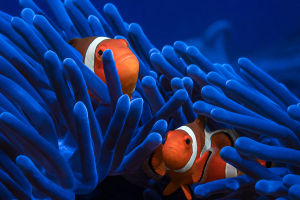Jellyfish, a significant group within the phylum Cnidaria, are ancient and enigmatic marine organisms.
Their unique morphological characteristics, complex life habits, and bioluminescence have attracted substantial research and attention.
This article will provide a detailed introduction to these aspects of jellyfish.
Morphological Characteristics
Jellyfish primarily consists of two main parts: the umbrella-shaped “bell” and the “tentacles” hanging below.
The bell is usually dome-shaped or disc-shaped, with numerous tentacles around its edge used for capturing food and protecting themselves. The outer layer of the bell is composed of cells called the epidermis, while the interior is made up of a semi-liquid substance known as the mesoglea. Between the epidermis and mesoglea is a structure called the gastrovascular cavity, which is used for digestion.
The tentacles of jellyfish are covered with cnidocytes, cells containing toxic nematocysts that can be used for capturing prey or defending against predators. The number, shape, and distribution of tentacles vary among different jellyfish species—some have long and slender tentacles, while others have short and thick ones.
In terms of movement, jellyfish propel themselves by contracting and relaxing the edges of the bell to push water, enabling them to swim through the water. This "pulsing" motion allows jellyfish to move effortlessly in the water. Although this method of movement may seem slow, it is highly effective.
Life Habits
Jellyfish are widely distributed across the world's oceans, from tropical to polar regions.
They typically inhabit the pelagic zone of the ocean, though some species live nearshore or in deep-sea environments. Jellyfish's life habits and behaviors are influenced by environmental factors such as temperature, salinity, and water currents.
Most jellyfish are planktonic, using ocean currents to migrate over long distances. Their diet primarily consists of plankton, small fish, and other marine microorganisms. By using the nematocysts on their tentacles, jellyfish effectively capture prey, which is then transported to the gastrovascular cavity for digestion.
Jellyfish survival is also closely related to environmental changes. Some species are highly sensitive to changes in water quality and are often considered indicators of environmental health. When water temperatures rise or ocean pollution becomes severe, jellyfish populations may surge, leading to phenomena known as "jellyfish blooms," which can impact marine ecosystems.
Bioluminescence
The bioluminescence of jellyfish is a typical example of biological light emission.
Many jellyfish possess light-emitting cells or structures within their bodies, a phenomenon known as "bioluminescence." This light is produced through chemical reactions involving luminescent proteins (such as luciferins) and luminescent enzymes (such as luciferases).
When jellyfish sense external stimuli or are capturing prey, the luciferins and luciferases within their bodies react to produce light. This bioluminescence can be used to attract prey, confuse predators, or communicate within the species. For instance, some jellyfish produce bright flashes of light when threatened to scare off predators or distract them.
The bioluminescence of jellyfish is not only significant in their natural ecology but has also garnered considerable scientific interest. Research has shown that the bioluminescence mechanisms of jellyfish have potential applications in biology, medicine, and environmental monitoring, such as serving as biological markers or developing new optical technologies.
Jellyfish, as ancient marine organisms, possess unique morphological features and rich biological characteristics. As research on jellyfish continues to advance, our understanding of these mysterious creatures will deepen, providing more scientific insights and applications for marine biology and ecological conservation.


